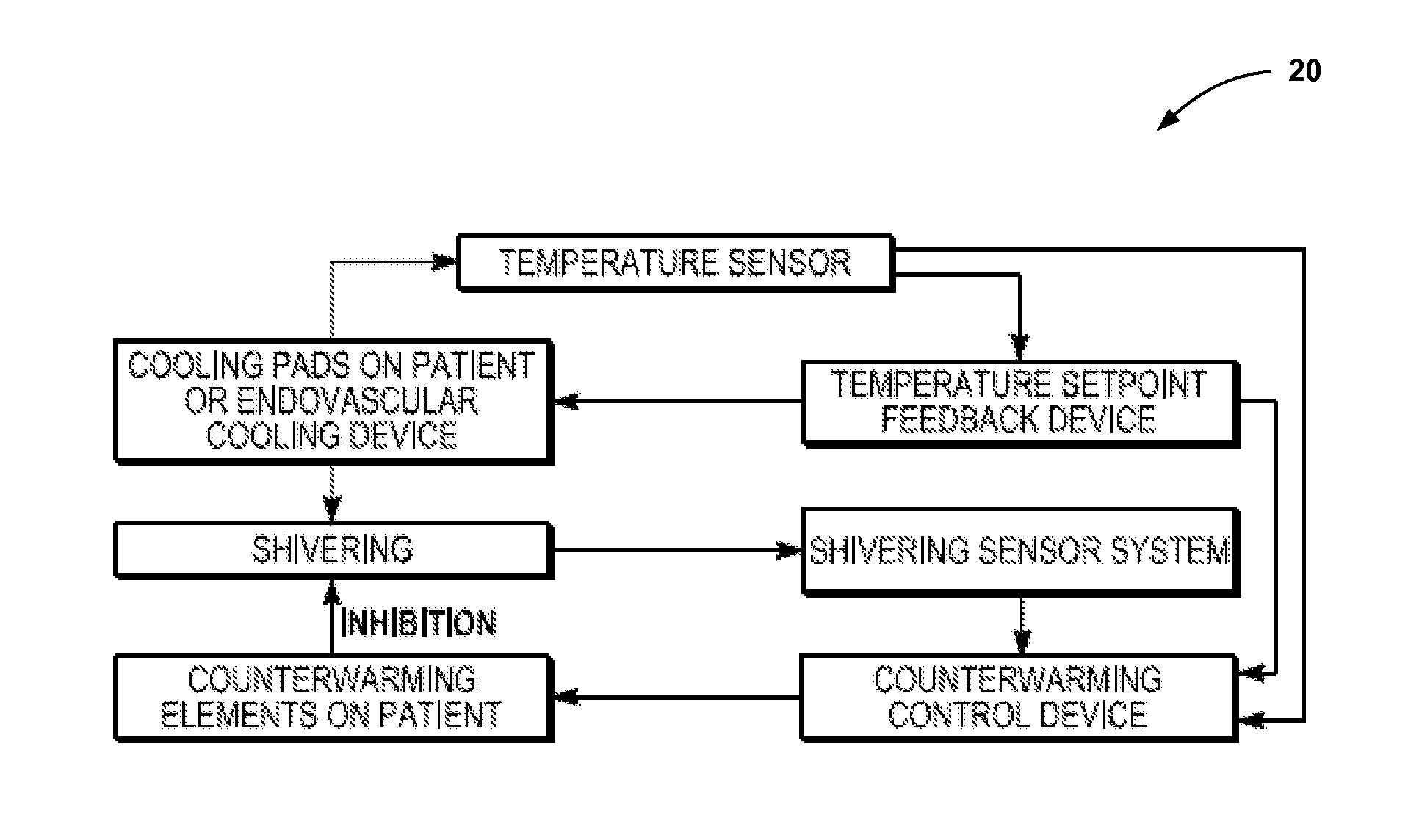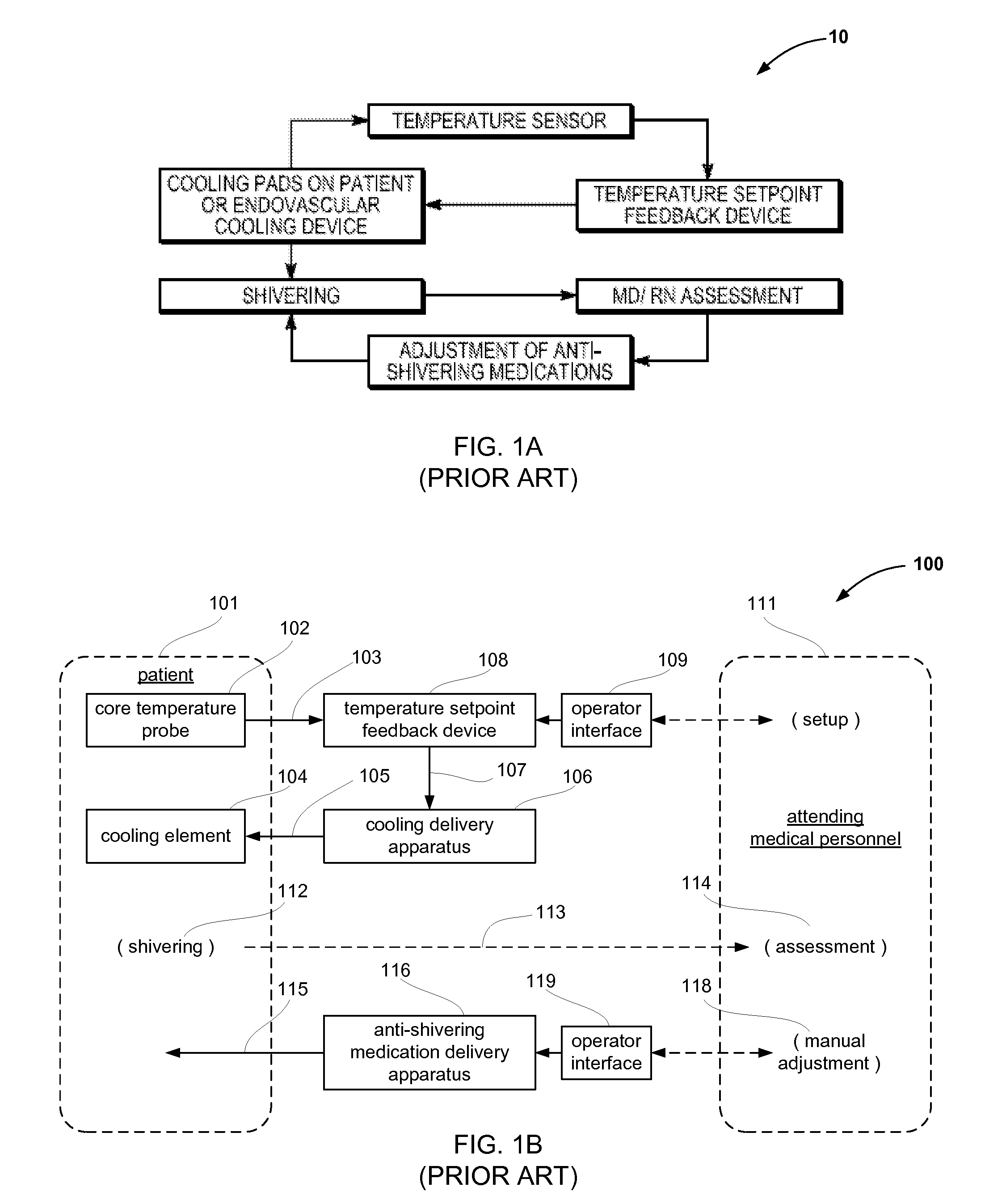Method and apparatus for measuring and treating shivering during therapeutic temperature control
a technology of temperature control and shivering, applied in the field of therapeutic temperature regulation, can solve the problems of limited efficacy, harmful physiological effects of shivering in this context, and the generation of hypothermia or maintaining normothermia, and achieve the effect of reducing the contribution of signal a
- Summary
- Abstract
- Description
- Claims
- Application Information
AI Technical Summary
Benefits of technology
Problems solved by technology
Method used
Image
Examples
example 1
[0124]For detection based on electrode-based sensing of electrical activity, one or more electrodes may be placed on or in the body at sites susceptible to shivering. FIG. 9A is a plot (trace) of a data signal obtained over a duration of several seconds (the ECG epoch), by an ECG electrode applied to the skin of a shivering subject, at a site overlying a muscle mass (the pectoral muscles) that is susceptible to shivering. ECG cycles are clipped from the ECG epoch, and outlier QRS complexes are rejected. The resulting ECG cycles are aligned on the positive peak of the QRS complex of each, as shown at 92 in FIG. 9B. Then the aligned ECG cycles are averaged, yielding a result as shown at 93 in FIG. 9C. Then the data shown in FIG. 9C are subtracted from the data for each of the aligned ECG cycles shown in FIG. 9B, to yield a result as shown at 94 in FIG. 9D. The data of FIG. 9D are then clipped at 95, to remove the initial QRS portion of the traces (indicated by arrow A), and leaving th...
example 2
[0127]For detection based on direct sensing of periodic movement (vibration), one or more motion sensors, such as an accelerometer, may be applied to any exposed skin region overlying a muscle group engaged in shivering. The sensors may be held in place using an adhesive such as a hydrogel, or by an elastic band. FIG. 11A is a plot (trace) of a data signal from an accelerometer held on the skin of a shivering subject, at a site overlying a muscle mass susceptible to shivering (the pectoral muscles). In this demonstration the data were obtained using an accelerometer. FIG. 11B is a plot (trace) of a data signal, obtained in the same manner, from the same subject following application of counterwarming. FIG. 11C is a plot showing the power spectral density curve derived from the data of FIG. 11A by autocorrelation followed by fast Fourier transform (FFT). A high narrow peak 142 at about 6.75 Hz, and a much lower peak appears at about 13.3 Hz. FIG. 11D is a plot showing the power spect...
PUM
 Login to View More
Login to View More Abstract
Description
Claims
Application Information
 Login to View More
Login to View More - R&D
- Intellectual Property
- Life Sciences
- Materials
- Tech Scout
- Unparalleled Data Quality
- Higher Quality Content
- 60% Fewer Hallucinations
Browse by: Latest US Patents, China's latest patents, Technical Efficacy Thesaurus, Application Domain, Technology Topic, Popular Technical Reports.
© 2025 PatSnap. All rights reserved.Legal|Privacy policy|Modern Slavery Act Transparency Statement|Sitemap|About US| Contact US: help@patsnap.com



